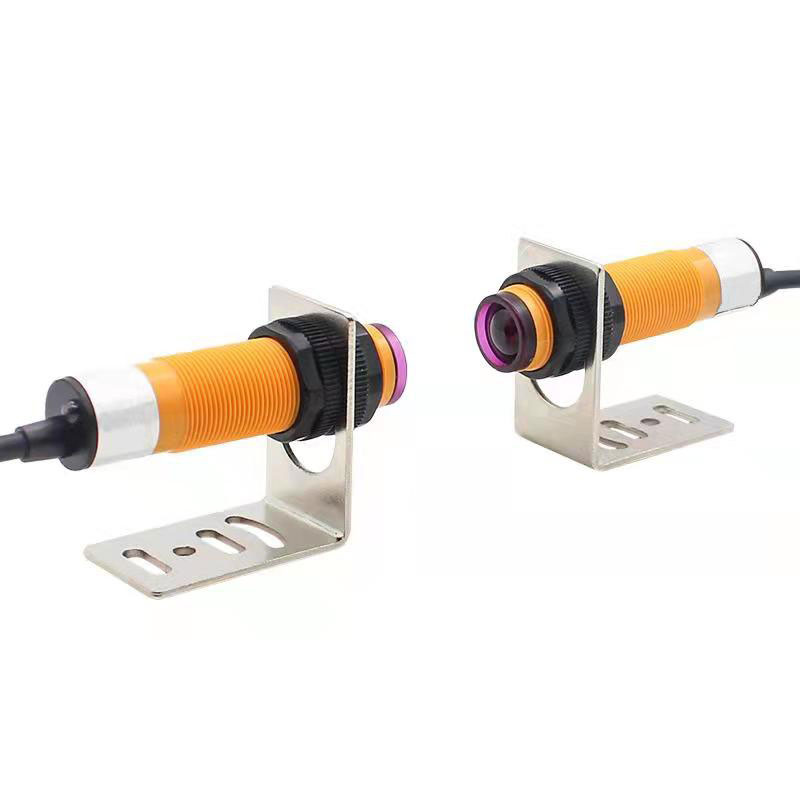Efficiency and Precision: Exploring the Opposed Photoelectric Switch Sensor PNP
2023-10-18
In the realm of industrial automation and sensing technology, photoelectric switch sensors play a crucial role in detecting the presence or absence of objects, ensuring seamless and efficient operations in various applications. Among the various types of photoelectric sensors available, the Opposed Photoelectric Switch Sensor PNP (Positive-Negative-Positive) stands out for its unique features and superior performance. In this blog, we will delve into the functionality and advantages of the Opposed Photoelectric Switch Sensor PNP, shedding light on why it has become a preferred choice in industrial settings.
Understanding the Opposed Photoelectric Switch Sensor PNP:
The Opposed Photoelectric Switch Sensor PNP is a type of through-beam photoelectric sensor, which means it consists of two separate units - a transmitter and a receiver. The transmitter emits a focused beam of light, while the receiver is designed to detect this light. When an object passes between the transmitter and the receiver, interrupting the light beam, the sensor detects the change and generates an output signal accordingly.
PNP Output Configuration:
The PNP output configuration is a defining feature of this type of photoelectric sensor. PNP sensors are known as "sourcing" sensors, meaning they provide the power supply to the load (e.g., a programmable logic controller or PLC) when the sensor output is active. When the sensor detects an object, it switches its output state to high (or "on"), allowing current to flow from the power supply to the load. This output configuration simplifies wiring and installation, making it easier to integrate the sensor into existing systems.
Advantages of the Opposed Photoelectric Switch Sensor PNP:
1. Versatile Sensing Range: Opposed Photoelectric Switch Sensor PNP offers a wide range of sensing distances, making it suitable for various applications. Whether you need short-range detection for precise object positioning or long-range detection for larger objects, the sensor can be adjusted accordingly to meet your specific needs.
2. Reliable Operation: The opposed beam design of this photoelectric sensor ensures reliable and consistent detection. Since the transmitter and receiver are separate units, the sensor can accurately detect objects regardless of color, shape, or surface characteristics.
3. Fast Response Time: In industrial settings, response time is crucial. The Opposed Photoelectric Switch Sensor PNP boasts fast response times, allowing for quick and efficient object detection. This feature is especially beneficial in high-speed automation processes.
4. Immunity to Ambient Light: These sensors are designed to be immune to ambient light interference. Advanced technology filters out external light sources, ensuring that the sensor's performance remains unaffected even in environments with strong lighting conditions.
5. Robust Construction: Industrial environments can be harsh, with exposure to dust, moisture, and vibrations. The Opposed Photoelectric Switch Sensor PNP is built with rugged and durable materials, making it suitable for use in challenging conditions.
6. Reduced Downtime: By providing precise and reliable object detection, these sensors contribute to increased productivity and reduced downtime in automated processes. Their accuracy ensures that machines and equipment operate smoothly and efficiently.
Applications of Opposed Photoelectric Switch Sensor PNP:
The Opposed Photoelectric Switch Sensor PNP finds application in a wide range of industries, including:
- Packaging: In packaging lines, these sensors are used for product counting, position control, and verifying package presence.
- Conveyor Systems: They play a critical role in detecting the presence of objects on conveyor belts, triggering sorting and diverting actions.
- Assembly Lines: In assembly processes, the sensor ensures proper alignment of components and verifies completed assemblies.
- Material Handling: The sensors aid in pallet detection, controlling robotic movements, and guiding autonomous guided vehicles (AGVs).
Conclusion:
The Opposed Photoelectric Switch Sensor PNP is a powerful and versatile sensing solution that brings efficiency and precision to industrial automation. Its ability to provide reliable object detection, fast response times, and immunity to ambient light makes it a valuable asset in various applications. Whether it's optimizing production processes, enhancing product quality control, or streamlining material handling, the Opposed Photoelectric Switch Sensor PNP continues to play a vital role in modern industrial settings, contributing to increased productivity and overall operational excellence.



